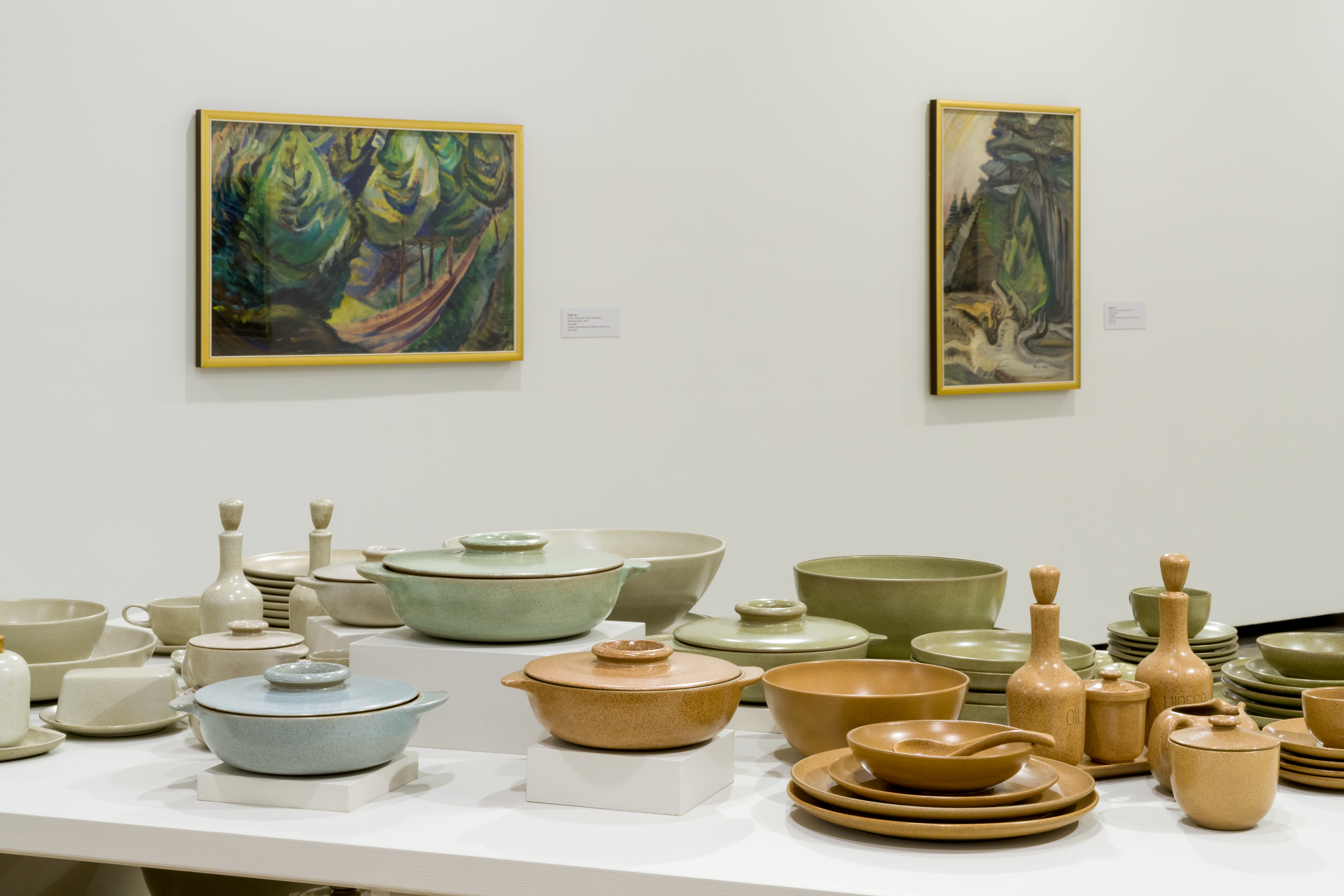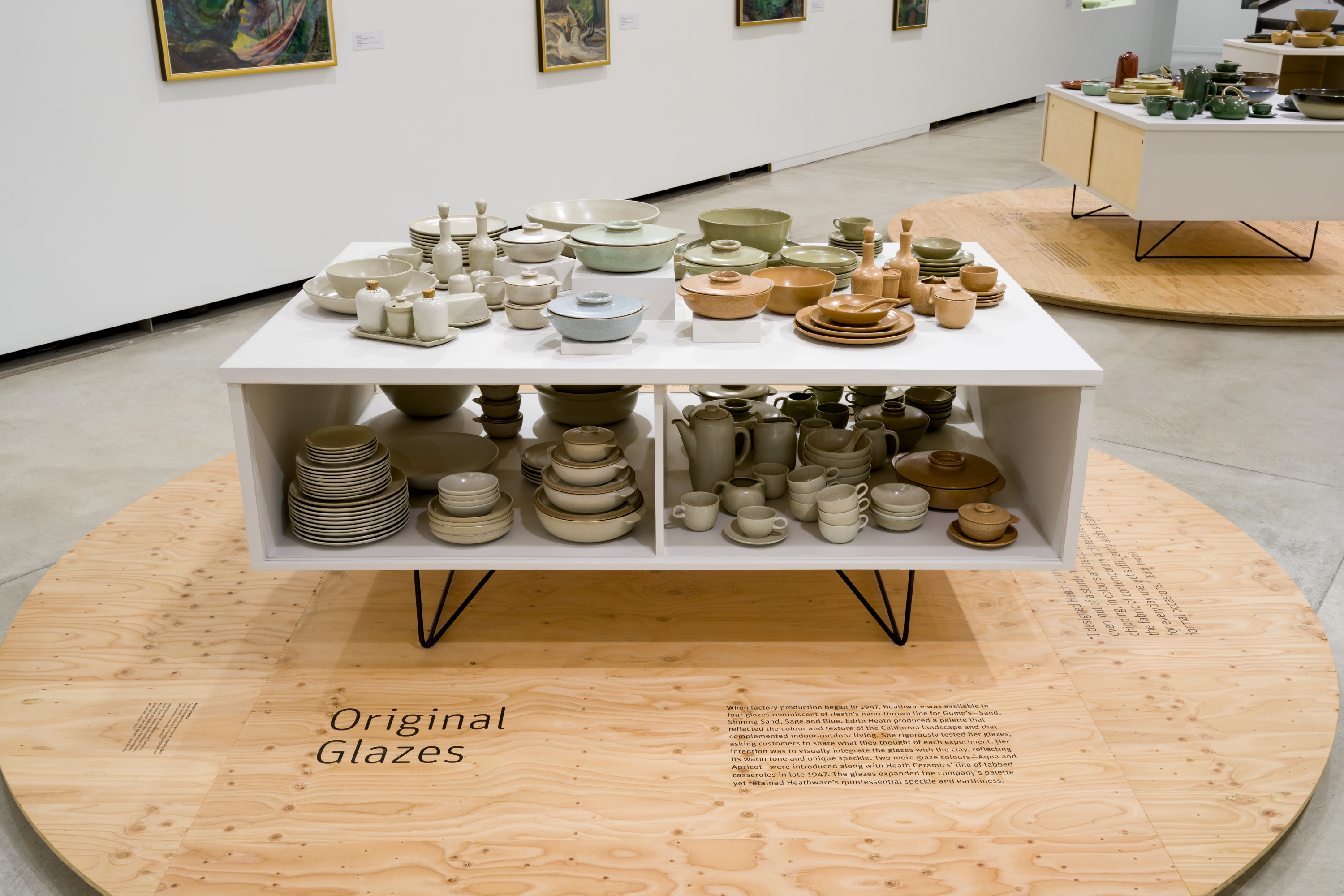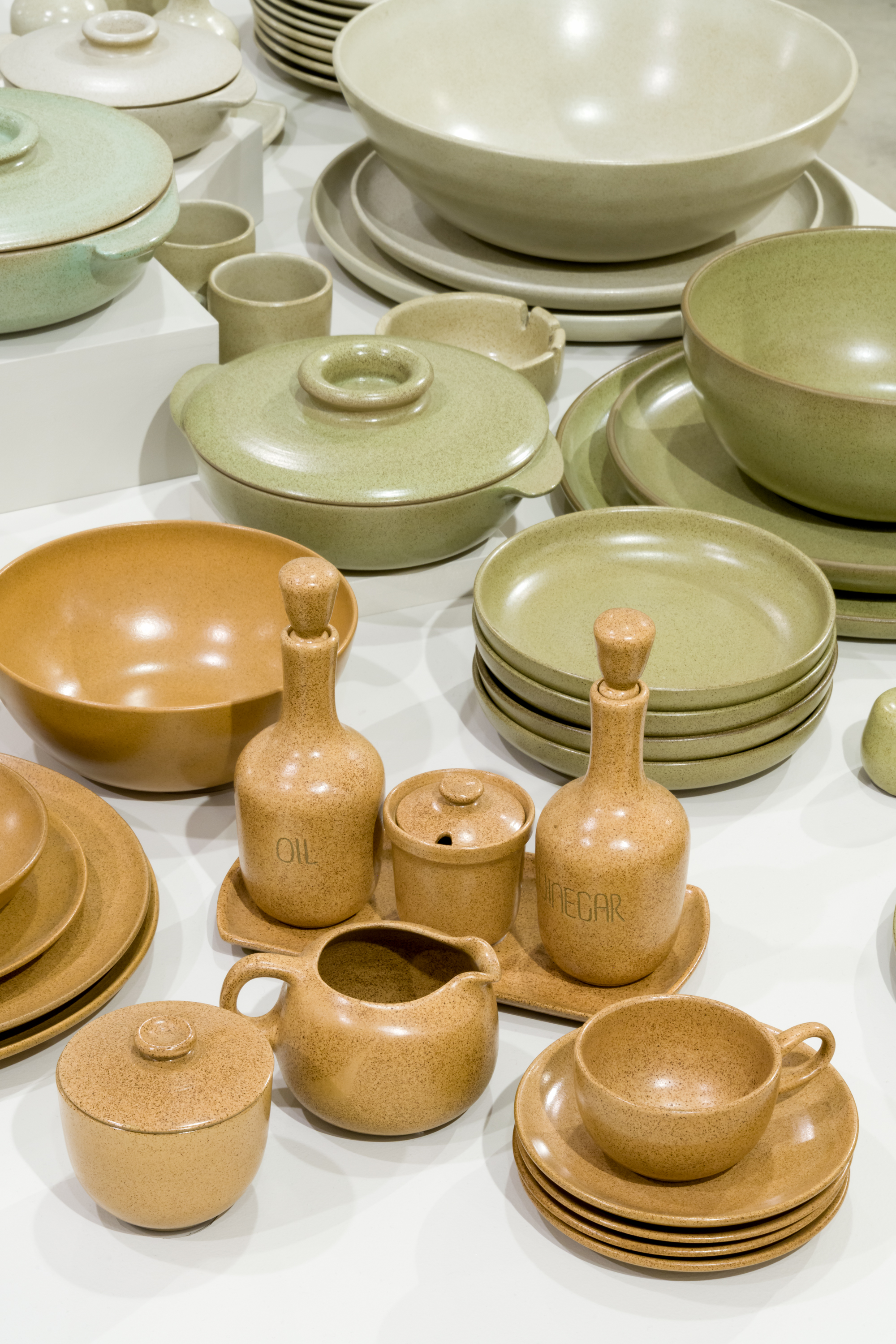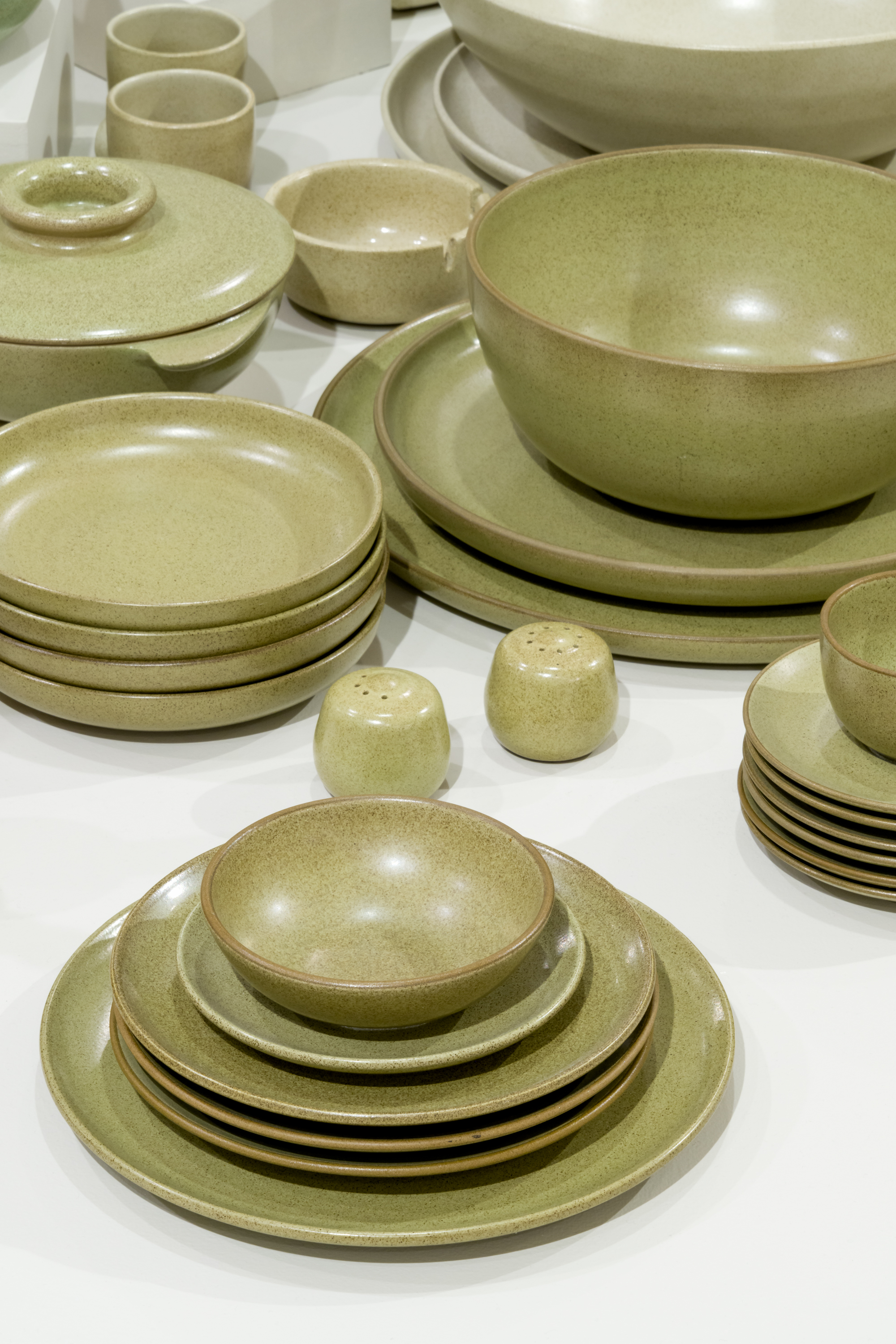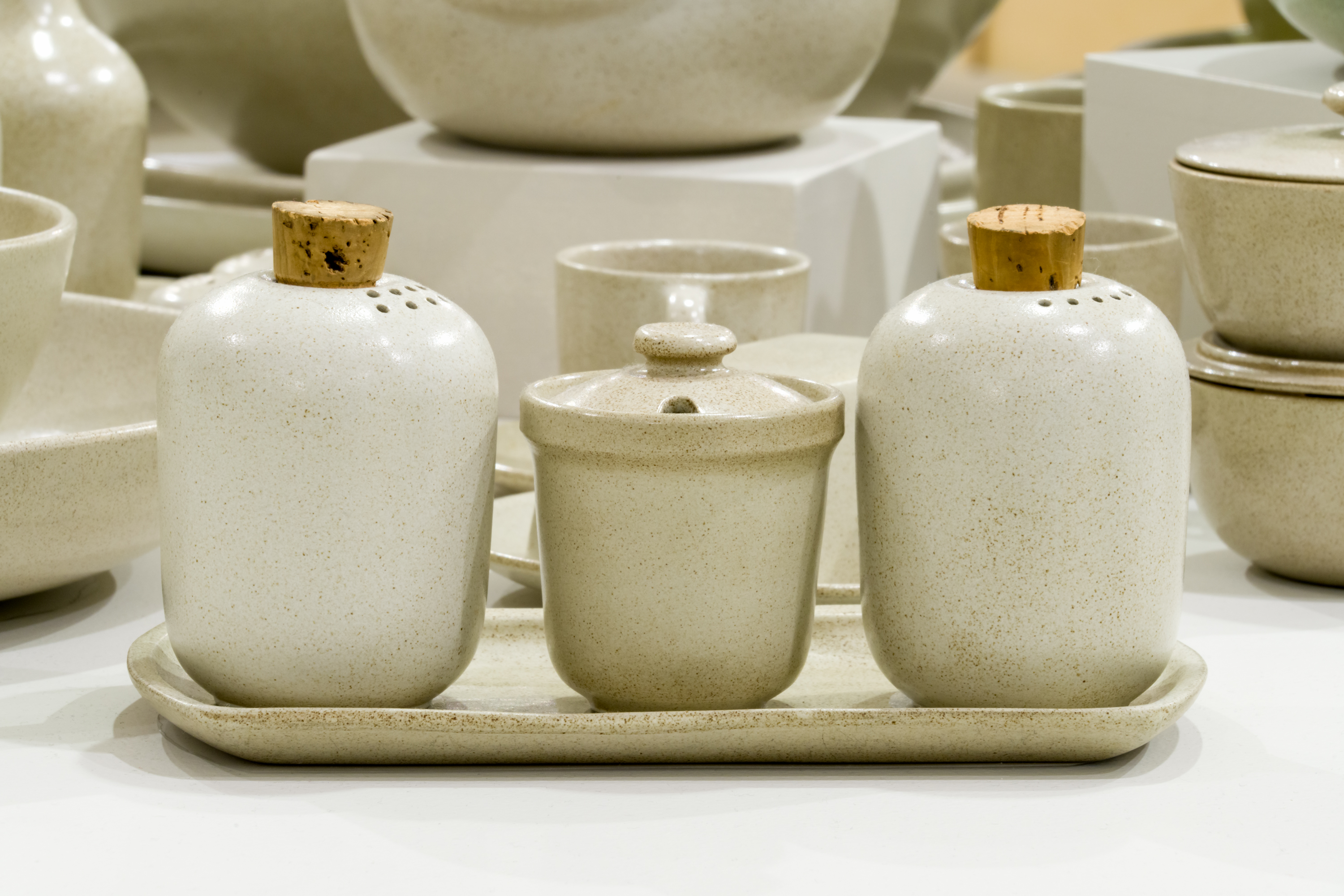The original line of Heath California dinnerware, later known as the Coupe line, included a place setting comprised of three plates, a dessert bowl, a teacup and a saucer, complemented by two serving bowls, a creamer and sugar bowl set, salt and pepper shakers, and a platter. It quickly expanded to include casseroles, bowls, platters, ashtrays and other accessories in a variety of sizes that catered to a new, informal West Coast lifestyle. The introduction of this line marked the transition from solely hand-thrown ware to more industrialized production using jigger wheels and slip casting. Seventy-five years later, the Couple line is still in production—a testament to its durability and simple, enduring forms.
When factory production began in 1947, Heathware was available in four glazes reminiscent of Heath’s hand-thrown line for Gump’s—Sand, Shining Sand, Sage and Blue. The palette reflected the colour and texture of the California landscape and complemented indoor-outdoor living. Edith Heath rigorously tested her glazes, asking customers to share what they thought of each experiment. Her intention was to visually integrate the glazes with the clay, reflecting its warm tone and unique speckle. Two more glaze colours—Aqua and Apricot—were introduced along with Heath Ceramics’ line of tabbed casseroles in late 1947. The glazes expanded the company’s palette yet retained Heathware’s quintessential speckle and earthiness.
I designed Heath dinnerware so it could be used in the oven, out of a sturdy material with edges that minimize chipping, in colours and textures that become a part of the fabric of contemporary architecture and life—sturdy for everyday use, yet sufficiently sophisticated for more formal occasions. (Edith Heath, Qualities of Contemporary Design, undated)
